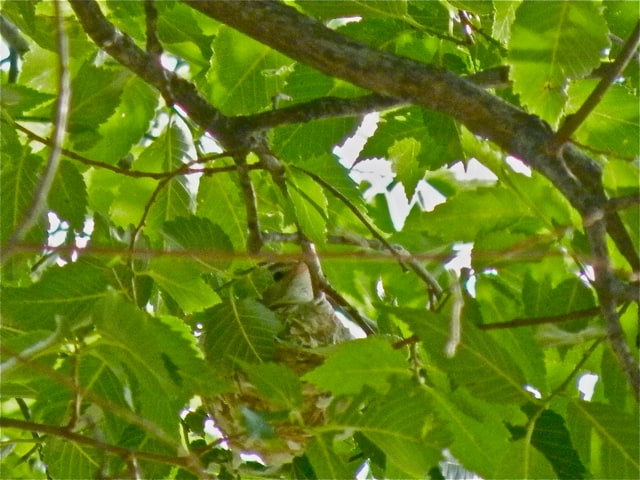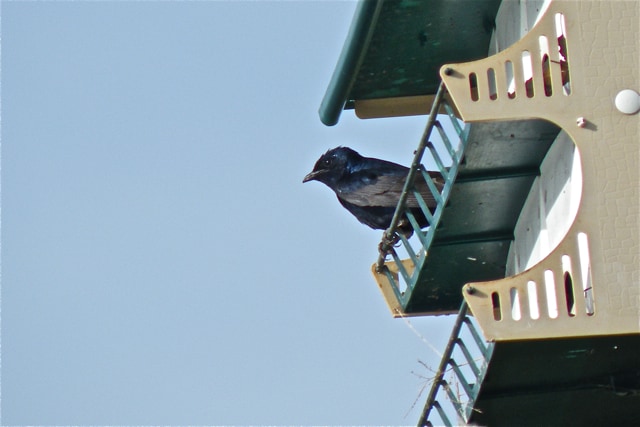On a tip from a friend, I headed to a Boomer Lake Park here in Stillwater, OK yesterday morning to confirm the appearance of a rare duck. I found the Black-bellied Whistling Duck quite easily!

Although Stillwater is a few hundred miles north of where this species is distributed according to range maps in most field guides, it has in recent years been moving rather steadily north, and was first confirmed breeding in Oklahoma in 1999. It was a thrill for me to find the bird more for its jaunty good looks than the significance of the record. I contended myself with a few diagnostic photos of the duck and then got distracted by other birds at the park.
There were lustily-singing mockingbirds, Purple Martins flying hither and thither collecting food for their burgeoning broods, and Western Kingbirds angrily scolding interlopers with their squeaky toy calls.
But the song that really caught my attention was that of a Warbling Vireo. The bird was close, and seemed to be singing from a nearby elm. I wandered over in hope of getting a photo of the bird in action, as I’m always on the lookout for a photo I can use for teaching.
As I approached the tree, the bird kept singing but I could not see him. Eventually, I was able to spy a nest way up through the branches. Then I remembered something odd about vireos: they sometimes sing while sitting on the nest. Sure enough, there he was – his drab little face looking this way and that as he poured forth in song directly from the nest. (Of course, I can’t be sure it wasn’t the female singing while incubating – female Warbling Vireos are known to sing – but this was a full-on loud version of the song, rather than the “whisper songs” that some female birds produce.)

Arthur Cleveland Bent in his “Life Histories of North American Wagtails, Shrikes, Vireos, and their Allies” (Smithsonian Institution Bulletin 197 from 1950) provides this reference to vireos singing from the nest:
Many observers have noted the warbling vireo’s habit of singing while he is incubating. William Brewster (1937) speaks of it thus: “Soon after leaving the Yellow-throat’s nest, I heard our Warbling Vireo singing in the orchard. Thinking he might be on the nest, I followed up the sound and directly saw the nest in the very top of a rather tall tree attached to the horizontal twigs of a long,
upright
leafy branch. I could see the bird’s head distinctly. He raised it high when he sang and his white throat swelled and flashed in the sunlight.”
singing
It was a wonderful experience for me to share this bond with the great William Brewster (in addition to the bond I just discovered – Brewster died on my birthday), and I am delighted to be able to share that with you through the following video. Enjoy!
Warbling Vireo
Tim O'Connell
Tim O'Connell is a professor at Oklahoma State University where he teaches classes in wildlife ecology and directs research on bird/habitat associations. He is the current president of the Payne County Audubon Society, and has held positions with the Oklahoma Ornithological Society, Pennsylvania Society for Ornithology, and the State College (PA) Bird Club. He is keenly interested in training the next generation of birders and ornithologists, and actively engaged in efforts to do that through the international Wilson and Cooper ornithological societies.
- Web |
- More Posts(5)

Leave a Reply